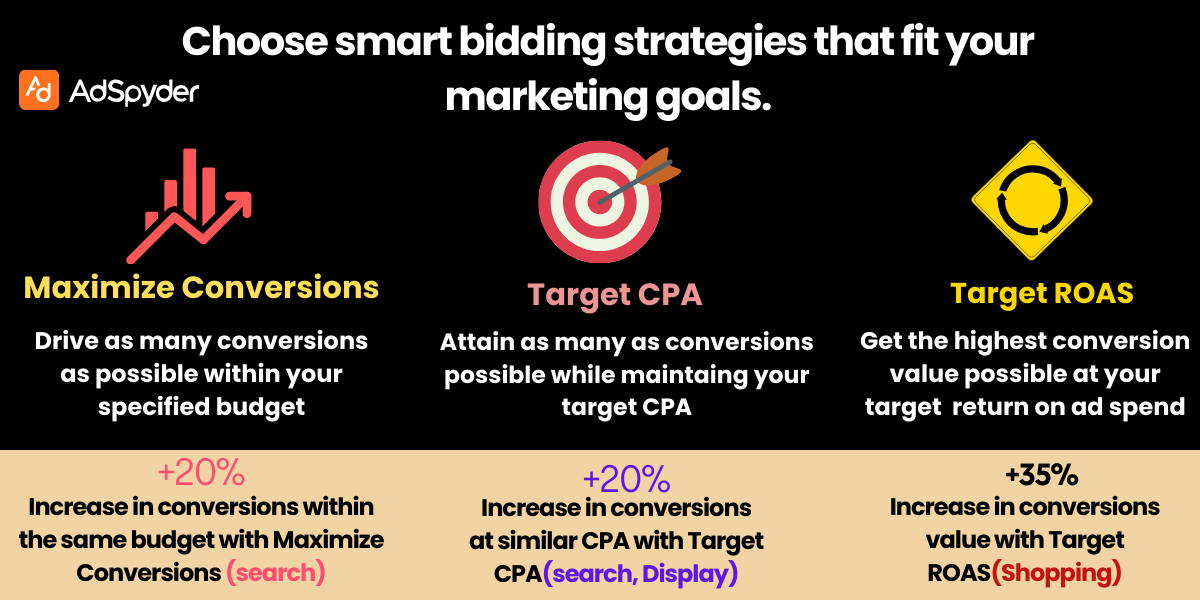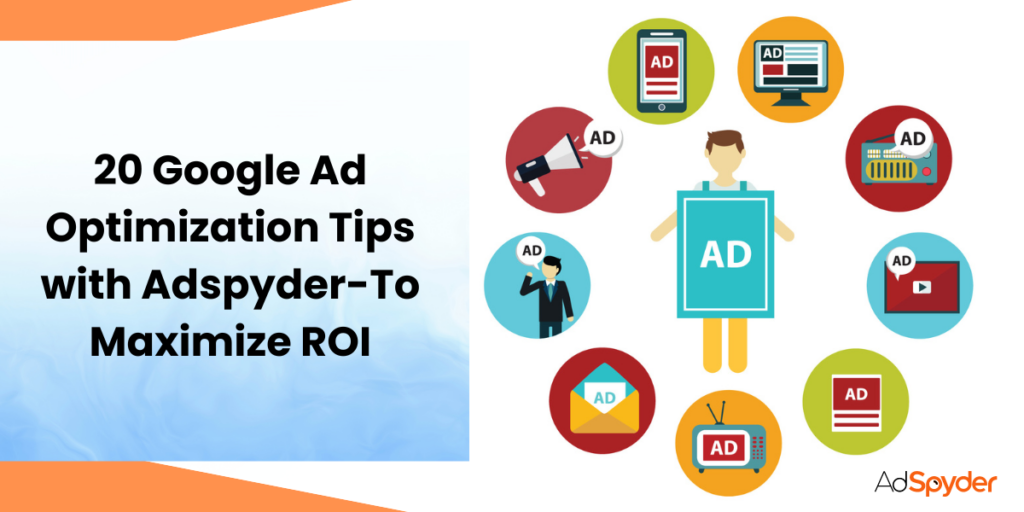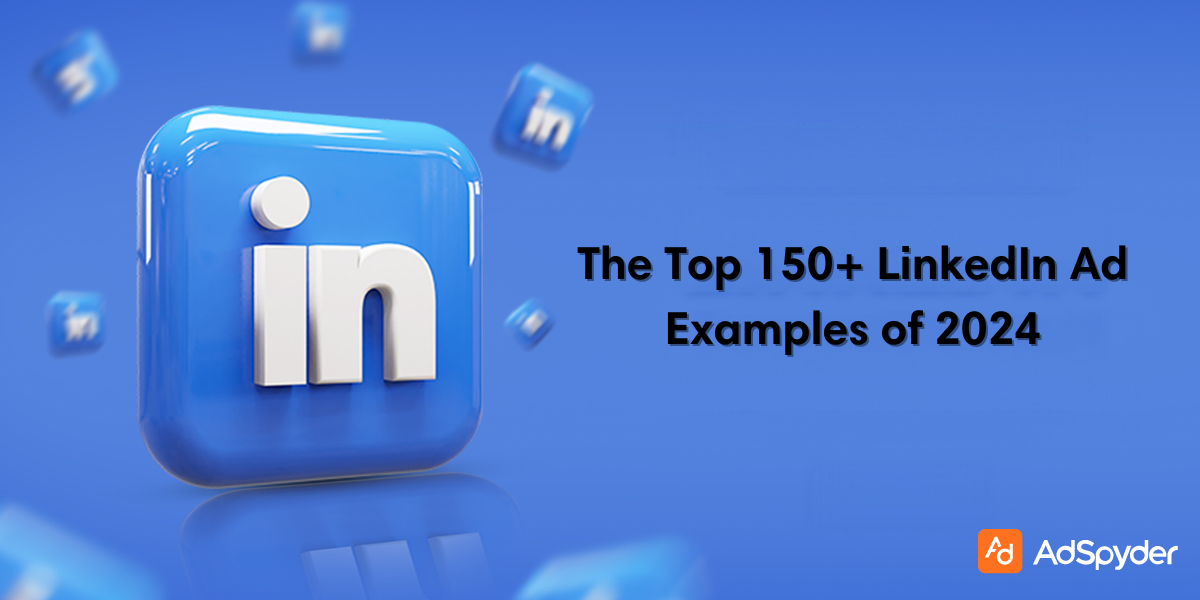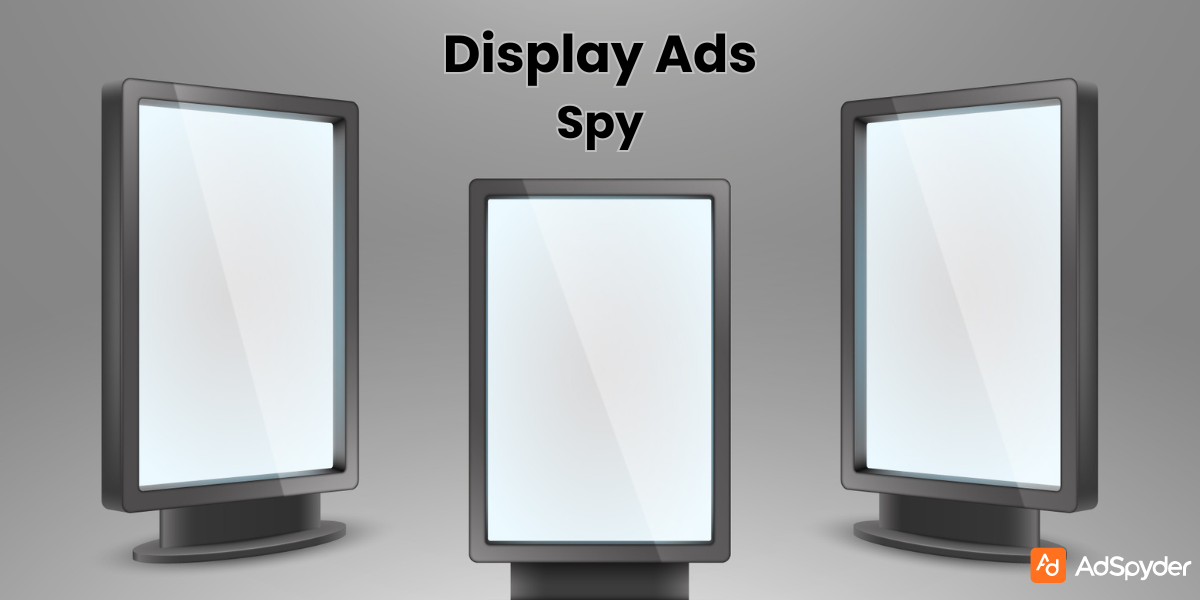Achieving an unparalleled return on investment requires a strategic approach. This comprehensive guide unveils a set of Twenty Google Ads Optimization Tips with AdSpyder to Boost ROI. From conducting insightful competitor analysis and precise keyword refinement to seamlessly integrating with Google Ads and leveraging AdSpyder’s advanced optimization features, each tip is tailored for professionals seeking to maximize their advertising impact by optimizing Google ads campaigns.
Understanding and Targeting Your Audience
The key to successful Google Ad campaigns lies in the ability to understand your audience and effectively target them. You may have designed the perfect ad, but it is of no use if it does not reach the right audience.
Identifying Target Demographics
To make sure that your Google Ad reaches the right audience, begin by delving into the specifics of your target audience. Thus, it is important to understand who your target audience is. Along with that, know about their interests, habits, and what they are actively seeking.
Leveraging Google’s Audience Insights
If you want to refine your target audience even further, make sure to use Google’s Audience Insights. This is an important tool providing a wealth of information regarding user behavior, preferences, and the various platforms that they frequently use. By having this data, you can optimize Google ads in a way that reaches your target audience.
Check out: Obtaining Necessary Licenses and Permits for Gambling Ads in Specific Markets
Mastering Keyword Optimization

If you want your Ad to be seen by the right audience, conducting keyword research is a prerequisite. Keyword research is the process of identifying the right set of keywords to be used for Google ads keyword optimization.
Effective Keyword Selection
The significance of effective keyword selection is that it ensures that your Google Ad reaches the right audience, increasing the likelihood of attracting potential customers who are genuinely interested in your products or services. Google’s Keyword Planner is one such effective tool that can help you discover new keywords related to your business so you can optimize Google Adwords with the right keyword. With this tool, you can also find estimated searches and the cost needed to target them.
You can also use AdSpyder’s Keyword Manager feature to get the best results for keyword selection. Just type in your focus keyword and get related keywords along with important metrics such as CPC and search volume.
Utilizing Negative Keywords to Refine Campaigns
Additionally, using negative keywords in your Google Ad campaign can significantly enhance ROI by refining your targeting strategy. Negative keywords help exclude your ads from being triggered by irrelevant search queries. By specifying terms that are not aligned with your products or services, you prevent your ads from being shown to users who are unlikely to convert. This reduces wasted ad spend on clicks that are unlikely to result in meaningful interactions.
Crafting Impactful Ad Content
Well-crafted ads can grab the attention of the users, thereby, helping you to significantly increase ROI. When writing your ad, there are certain ingredients that you must incorporate in your Ad content to make it impactful. In short, you want to show the value of your products without being so pushy.
Writing Compelling Ad Copy
A well-crafted Ad campaign contains a compelling headline, concise copy, and a strong call to action, enticing users to click on your ads. When writing a headline, make sure to include keywords to increase the relevance of the ad. For instance, if there are six keywords and four of them have high traffic, it is a good idea to incorporate 4 of these keywords to increase the strength of the Google Ad. Other practices to incorporate while writing ads are to be specific and avoid using generic language. You can also check out Add Strength to get feedback on how to focus on the right message on your Google Ad. You can achieve the same results with just a few clicks, with AdSpyder’s Ad Generation feature. Select your category and persona of the target audience and let AdSpyder’s AI feature do the rest. With compelling ad copies that align with your ad goals, AdSpyder’s AI Ad Generation feature is a must-have tool in your digital marketing arsenal.
Optimizing Visuals and Videos for Engagement
While writing compelling copies is crucial, it is not the sole ingredient for a successful Google Ad campaign. Optimizing your visuals and videos for engagement is equally important. As users dive to witness the plethora of Ads, it is the stunning visual optimization that stays in their minds. As you work on optimizing Google ad campaigns, and Optimizing your Google Shopping campaigns by refining product titles, descriptions, and images to enhance visibility, attract more qualified leads, and ultimately boost your eCommerce success. Keep in mind that Images need to be relevant in the same way headlines and descriptions do.
Smart Budgeting and Bidding
Smart budgeting involves allocating resources judiciously to ensure optimal coverage, while strategic bidding is about placing competitive yet cost-effective bids to secure valuable ad placements. Setting the right Google ads budget is key to getting the most out of your ad campaigns. Your budget needs to match your goals and cover the entire time frame you plan to run your ads.
Setting and Managing Your Ad Budget
Also, think about things like how many others in your industry are advertising and how competitive your chosen keywords are. Taking these factors into consideration helps you make smart budget decisions. It ensures that your campaigns not only have the financial support they need but also put you in a good spot compared to others in your field, making your advertising efforts more effective overall.
Implementing Google’s Automated Bidding Strategies

Now that you have allocated your budget to optimize search campaigns, it is time to implement Google’s Automated bidding strategies. Smart Bidding is an automated bidding strategy powered by machine learning. It leverages vast sets of data to optimize bids in real time, enhancing the likelihood of conversions. Google’s Smart Bidding options include Target CPA (Cost Per Acquisition), Target ROAS (Return On Ad Spend), Maximize Conversions, and Enhanced CPC (Cost Per Click). Before using any of these bidding strategies, it is important to understand the objectives of the business. Target CPA, Target ROAS, and Maximize Conversions tailored to diverse campaign objectives. This intelligent system adapts in real-time, optimizing bids to enhance the likelihood of conversions.
Enhancing Visibility with Ad Extensions
The main purpose of optimizing Google Ad campaigns is to boost the visibility of services and products. With that said, using Ad extensions for the same is one of the powerful strategies that businesses can deploy to achieve this target. Ad extensions provide additional details about your ad which means users can further engage with your ads. By incorporating these extensions strategically, you not only enhance your ad’s visibility but also provide valuable information that can drive higher click-through rates (CTRs) and, ultimately, better campaign performance.
Types and Benefits of Ad Extensions
The most commonly used Ad extension is the site link extension. It allows you to expand your ad by letting you add additional links to the relevant sections of the page, thereby, increasing the likelihood of getting clicks.
Another standout Ad extension is the callout extension. It highlights key features, benefits, or promotions. This extra text gives users a quick overview, enticing them to explore more about your offerings.
Structured snippet extensions add depth by showcasing specific aspects of your products or services. From location and price extensions to call and app extensions, each extension serves a distinct purpose, enhancing your ad’s visibility and providing users with valuable information.
Strategic Ad Placement and Scheduling
Strategic ad placement and scheduling are pivotal components in optimizing the impact of your Google Ad campaign. Where and when your ads appear can significantly influence their effectiveness. Crafting a well-thought-out strategy for ad placement and scheduling ensures that your messages reach the right audience at the right time, maximizing engagement and conversion opportunities.
Choosing Optimal Ad Placements
Placement optimization is crucial for ad performance, dictating where ads appear—search network, display network, specific websites, or mobile apps. Platforms like Google Ads and Facebook offer diverse placement options. Understanding your audience’s online habits is key; analyze past campaigns for insights. Tailor placements based on your product—mobile apps may excel in mobile placements. Regularly monitor and adjust placements using platform reports. If a placement underperforms, consider removal. Cost analysis is vital, balancing CPMs or CPCs with potential ROI for a profitable campaign. Strategic placement decisions significantly impact ad visibility and overall success.
Timing Your Ads for Maximum Impact
Online platforms such as Google Ads and Facebook provide advertisers with the capability to schedule ads strategically. For example, a restaurant might choose to showcase lunch specials from 10:00 a.m. to 12:00 p.m. and dinner specials from 4:00 p.m. to 6:00 p.m. On the other hand, a B2B company may find it more impactful to display ads during weekdays when decision-makers are typically active. This scheduling flexibility allows advertisers to align their campaigns with specific timeframes that best resonate with their target audiences and cater to the unique preferences or behaviors related to their products or services.
Utilizing Analytics for Informed Decisions
Knowing the Analytics is crucial to make informed decisions. By having analytics by your side, you can discover what is working for you and what’s not. This will help you do some reiterations and provide you with the information where you need to make changes. Google Ads provide you with various information and reports that can help you analyze the performance of your Google Ads campaign.
Setting Up and Understanding Conversion Tracking
The first step to analyzing performance campaigns is by setting up Google Ads conversion tracking. It allows you to track the actions of users once they have clicked on your ads. You can discover what actions the users have taken – made a purchase, or simply browsed or filled out a submission form.
Analyzing and Interpreting Campaign Data
Beyond just tracking conversions, it’s crucial to consistently assess vital performance metrics like click-through rates (CTRs), conversion rates, cost per acquisition (CPA), and return on ad spend (ROAS). Regular analysis of these metrics is instrumental in recognizing trends, identifying underperforming ads or keywords, and making informed, data-driven decisions to fine-tune your campaigns for optimal impact. This ongoing scrutiny ensures that your advertising strategies remain agile and aligned with achieving maximum effectiveness.
The Power of A/B Testing
A/B Testing, also known as split testing, is a technique that allows marketers to compare the different versions (A and B) of a webpage to find out what works best for their audience. The significance of Google optimization and testing is that it delivers actionable insights into optimizing the user experience as well as increasing the conversion rate.
Implementing Effective A/B Testing Strategies
To conduct A/B testing, create multiple variations of your ads, all with different headlines, descriptions, and calls to action. Now that you have created multiple variations of your ads, run these ads simultaneously and track their performance using reporting tools. Google Optimize allows you to conduct A/B testing seamlessly, enabling you to compare different versions of a webpage and optimize for better user engagement or conversion rates. By gleaning information from the reporting tools, you can compare various performance metrics to check out which ad resonated with your audience and drove the most conversions.
Keep in mind that while conducting A/B Testing, it is important to work on one element and keep other elements as they are. For instance, if you are working on finding the best headline, make sure to keep other details the same. To put it in simple words, keep the description, and targeted keywords the same
Landing Page Optimization
Optimizing landing pages for Google Ads is a crucial facet of digital marketing, focusing on refining and improving the performance of specific web pages designed to convert visitors into leads or customers. Key strategies involve crafting clear and compelling calls-to-action, delivering relevant and engaging content, optimizing for mobile responsiveness, ensuring fast loading times, and simplifying forms.
Creating High-Converting Landing Pages
Consistent branding, A/B testing, compelling headlines, trust-building elements, and a well-organized visual hierarchy contribute to creating a seamless and persuasive user experience. With ongoing analysis and adaptation, businesses can cultivate landing pages that not only attract traffic but effectively guide visitors toward desired actions, ultimately maximizing conversion rates and campaign success.
Leveraging AdSpyder for Advanced Optimization
AdSpyder emerges as a pivotal tool for digital marketers. Its capacity for comprehensive competitor analysis empowers marketers with strategic insights, enabling a proactive approach in a competitive landscape. With advanced keyword research capabilities, AdSpyder facilitates the identification of impactful keywords, contributing to enhanced campaign performance.
Competitor Analysis with AdSpyder
AdSpyder facilitates in-depth competitor analysis by tracking and analyzing the advertising strategies of competitors. It unveils valuable insights into their ad copies, keywords, and overall approach, empowering marketers to make informed decisions and stay ahead in the competitive landscape.
With AdSpyder’s Domain Overview feature, get to know what your competitors’ ad campaigns are like, the keywords they are targeting, ad copy content, and performance metrics of the ad campaigns.
Keyword Research and Optimization
Marketers can identify high-performing keywords, assess their competitors’ keyword strategies, and optimize their campaigns for maximum relevance and impact.
With AdSpyder’s Keyword Manager, get all metrics related to your keywords as well as get suggestions on related keywords that you can target with your ad campaigns.
Integrating AdSpyder Analytics with Google Ads
Seamlessly integrating AdSpyder Analytics with Google Ads enhances the depth of campaign insights. By amalgamating data from both platforms, marketers gain a holistic view of campaign performance, enabling more informed decisions and precise optimizations.
With AdSpyder’s Ad Account Integration feature, you can view metrics for all your ad campaigns across different platforms in a single dashboard. Track important metrics, get AI-assisted suggestions to optimize your ad campaigns, and stay on top of your ad campaign with ease.
Utilizing AdSpyder’s Ad Optimization Features
AdSpyder goes beyond conventional tools by offering specialized features for ad optimization. Marketers can leverage A/B testing, performance analytics, and ad variation insights to continually refine and enhance ad creatives, ensuring optimal engagement and conversion rates.
With AI-enabled suggestions to optimize your ad campaigns, align your ad campaign to your intended goals, without needing additional course correction.
Conclusion
Enhancing the performance of your Google Ads campaigns is essential for directing tailored traffic to your website and attaining your business objectives. Utilizing the 20 tips provided in this article can elevate your campaign effectiveness, boost your return on investment (ROI), and ultimately generate increased business for your endeavors.



